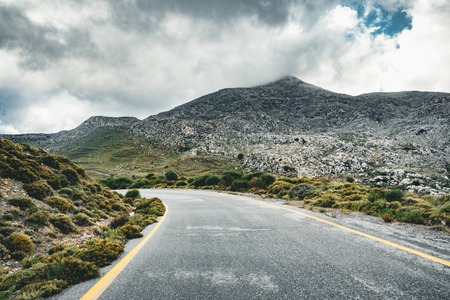Lacing Up: Gearing Up for the West Highland Way
There’s nothing quite like the thrill of preparing to tackle the legendary West Highland Way—a 96-mile trail winding from Milngavie to Fort William, right through the untamed heart of Scotland. But before you let the spirit of adventure sweep you off your feet, it’s wise to heed some homegrown advice and kit yourself out for every twist in the Highland weather. The locals will tell you: “If you don’t like the weather, wait five minutes.” So, what does it take to be ready for anything this iconic trail can throw at you?
Essential Kit: Beyond the Basics
First off, forget about heavy rucksacks weighed down with unnecessary luxuries—think light and nimble. A sturdy pair of well-worn walking boots is non-negotiable; blistered feet are a rite of passage, but good boots will keep you moving when the going gets boggy. Waterproofs are your second skin here—jacket, trousers, and even a pack cover. The Highlands laugh in the face of weather forecasts.
Layer Up Like a Local
The trick to staying comfortable is all about layers. Merino wool base layers wick away sweat without smelling like a wet dog after two days’ trekking. Add a warm fleece or insulated jacket for when the mist rolls in, and don’t skimp on a windproof shell—even in summer, Loch Lomond’s breezes can cut through you.
Smart Packing Tips
Keep essentials within easy reach: map and compass (never trust just your phone), energy snacks (Tunnock’s Caramel Wafers come highly recommended), and a refillable water bottle. Trust in Scottish hospitality by packing a reusable cup—you’ll be offered countless cups of tea along the way. Finally, always bring a sense of humour; it’s as vital as any bit of kit when the rain’s sideways and there’s still miles to go.
2. Mapping the Route: Navigating the Highlands
If you’re bold enough to lace up your boots for the West Highland Way, you’re in for a trek that’s as dramatic as a Scottish storm and twice as memorable. The route carves its way from the outskirts of Glasgow at Milngavie all the way to Fort William, threading together landscapes that could humble any adventurer. Let’s break down the key stages—both those iconic stretches immortalised in every travelogue, and those secret nooks that only true British ramblers whisper about over a pint.
Key Stages of the West Highland Way
| Stage | Distance (Approx.) | Legendary Spots | Lesser-Known Gems |
|---|---|---|---|
| Milngavie to Drymen | 12 miles / 19 km | Mugdock Country Park, Carbeth Huts | The hidden woodland tracks near Craigallian Loch – look out for local birdlife and old bothies |
| Drymen to Balmaha | 7 miles / 11 km | Conic Hill – panoramic views over Loch Lomond | The ancient yew groves just outside Drymen, perfect for a quiet breather before the climb |
| Balmaha to Rowardennan | 7.5 miles / 12 km | Shores of Loch Lomond, Ben Lomond towering above | The beaches near Sallochy Bay – ideal for wild swimming or a cheeky picnic if you dare brave the midges! |
| Rowardennan to Inverarnan | 14 miles / 22.5 km | The wild, rugged path hugging Loch Lomond’s edge, Rob Roy’s Cave (if you can spot it) | The hauntingly beautiful Inversnaid Falls, often skipped by those rushing through this challenging leg |
| Inverarnan to Tyndrum | 12 miles / 19 km | The Crianlarich hills, endless moorland vistas | The derelict ruins tucked away near Derrydarroch, echoing with tales of bygone crofters’ lives |
| Tyndrum to Bridge of Orchy | 7 miles / 11 km | The legendary Green Welly Stop for supplies and banter with fellow walkers | The secluded pine forests en route—perfect for a meditative pause away from the crowds |
| Bridge of Orchy to Kingshouse | 12 miles / 19 km | Rannoch Moor—remote, wild, utterly untamed Scottish wilderness at its finest | The mysterious Black Mount estate trails—rarely trodden by anyone but locals and gamekeepers |
| Kingshouse to Kinlochleven | 9 miles / 14.5 km | Buchaille Etive Mor – the iconic mountain profile that has tested many climbers’ mettle; Devil’s Staircase ascent and descent | The hidden glens beyond Altnafeadh where deer graze undisturbed by passing trekkers |
| Kinlochleven to Fort William | 15 miles / 24 km | Lairigmor pass with sweeping Highland panoramas, Ben Nevis looming like a final boss battle | The winding forest paths above Glen Nevis – if you time it right at dawn or dusk, you’ll feel like you’ve slipped into another realm entirely |
An Adventurer’s Approach: Beyond Guidebooks and GPS
This isn’t just a walk—it’s an immersion in living history and untamed nature. Every stage has its own rhythm: some days are all about battling bogs and pushing through wind-lashed ridgelines; others offer quiet moments among moss-laden pines or chance encounters with red deer slipping between ancient stones. The seasoned British rambler knows that while guidebooks plot out waypoints, it’s those half-hidden detours—the muddy sheep tracks leading to forgotten ruins or the lochside boulders perfect for lunch—that sear themselves deepest into memory.
A Few Insider Tips for True British Ramblers:
- Pace Yourself: Don’t rush the legendary spots; give yourself time to savour sunrise over Rannoch Moor or take tea by Loch Lomond.
- Tread Softly: Some of these nooks are fiercely protected by locals—respect boundaries and leave no trace.
- Banter is Currency: Strike up conversation in village pubs—you’ll glean stories and shortcuts never found on any map.
Dare To Explore Off The Beaten Track?
If you’re up for pushing your limits and embracing adventure with a dash of British grit, let curiosity lead you beyond the obvious. Whether you’re conquering Conic Hill in gale-force winds or discovering a forgotten glen cloaked in mist, mapping your own journey across the Highlands is as much about spirit as it is about navigation.

3. Highs and Lows: Tales from the Trail
If you’ve ever fancied a proper test of mettle, the West Highland Way delivers it in spades. The route is a patchwork of triumph and trial—one moment, you’re scrambling up the Devil’s Staircase, every muscle burning and lungs fighting for Scottish air; the next, you’re standing atop a windswept summit with Loch Leven sprawling below, utterly gobsmacked by the wild grandeur. It’s not all scenic bliss, though. There are bogs so relentless they’ll swallow your boots whole, leaving you squelching along Rannoch Moor with nothing but stubbornness and soggy socks to keep you company.
The Devil’s Staircase: A True Rite of Passage
Tackling the infamous Devil’s Staircase is like starring in your own epic saga. Each switchback feels steeper than the last, your backpack digging into your shoulders as Highland mist curls around you. But there’s a peculiar camaraderie on that ascent—strangers become mates as you exchange grimaces and encouragements, everyone united by their shared suffering and anticipation of what lies beyond.
Moments That Take Your Breath Away
Yet for every punishing climb, there’s an equal measure of reward. Cresting Conic Hill after a morning shrouded in drizzle reveals the shimmering expanse of Loch Lomond, sunlight breaking through clouds just long enough to remind you why you set out in the first place. These moments—the kind that make your heart thump with exhilaration—are what hikers trade tales about in bothies and pubs along the way.
Pushing Through Classic Scottish Challenges
Endurance is key when trudging mile after mile beneath ever-changing skies, battered by wind and rain that seem intent on testing your resolve. Yet even at your lowest ebb—when blisters sting and spirits wane—a spark keeps you moving forward. Maybe it’s the promise of a warm fire in Kinlochleven or simply the unbeatable elation of proving to yourself that you can go further than yesterday. On the West Highland Way, every hardship becomes a badge of honour, woven into your personal legend as you embrace all that Scotland throws at you.
4. From Bothies to B&Bs: Embracing Highland Hospitality
There’s a legendary warmth that pulses through the Scottish Highlands, and nowhere is it felt more keenly than along the West Highland Way. The route is a tapestry of encounters with the remarkable people who call this wild land home—each overnight stay or brief stop offering a new chapter in the story of Highland hospitality.
Bothies: Shelters Steeped in Camaraderie
Imagine trudging through wind and drizzle, boots caked in mud, only to stumble upon an old stone bothy nestled by a glen. These rustic shelters, free for all who pass, are sanctuaries for weary souls. Inside, you’ll find no luxuries—just wooden bunks, a fireplace, and perhaps some candle stubs—but what you do find is camaraderie. Stories swirl around the hearth as hikers from every corner of Britain (and far beyond) share tales, laughter, and often a dram of whisky. It’s communal living stripped down to its essence: strangers become friends overnight, bound by shared adventure and the crackle of peat fires.
B&Bs and Tearooms: The Heartbeat of Local Life
For those craving a soft bed and a hearty Scottish breakfast, traditional B&Bs dot the trail from Milngavie to Fort William. Here, hosts offer not just shelter but genuine Gaelic welcome—a steaming pot of tea thrust into your hands before your rucksack hits the floor, advice on tomorrow’s trek shared over eggs and tattie scones. Then there are tearooms where muddy boots are not just tolerated but expected; where Victoria sponge cakes vanish in minutes and mugs of builder’s brew fuel tired legs.
Highland Hospitality Highlights
| Stop | What to Expect | Cultural Touches |
|---|---|---|
| Bothies | Basic shelter, open fire | Storytelling, whisky sharing |
| B&Bs | Comfortable beds, homemade breakfast | Personal anecdotes, local tips |
| Tearooms | Cakes, scones, strong tea | Friendly banter, community feel |
The Unwritten Code: Kindness on the Trail
The true magic lies in the unwritten code that binds all who walk the Way: help offered freely—a lift when blisters strike or an extra sandwich when supplies run low. This generosity is more than tradition; it’s a way of life in Scotland’s north. Every encounter becomes part of your journey’s tapestry—a reminder that while the landscapes may be wild and untamed, the human spirit here burns bright with welcome.
5. Wild Spirits: Encounters with Scotland’s Nature and Legends
There’s a raw, untamed energy coursing through the Highlands, and the West Highland Way puts you right in its path. The landscape is more than just dramatic scenery—it’s an ever-changing theatre of wild spirits, both seen and unseen. As you trek across ancient moorlands shrouded in mist, you quickly realise why myths cling to these hills like the morning fog. Every step carries a sense of adventure, as if the ground itself remembers every footfall that came before yours.
Highland Wildlife: More Than Just a Backdrop
The true adventurer keeps their senses sharp, for the Highlands are alive. Red deer bound across the heather at dawn, while golden eagles wheel overhead, scanning the glens with a predator’s patience. If you’re lucky—or perhaps just quiet enough—you might spot a pine marten darting among moss-draped trees or catch an otter slipping through dark waters. It’s not uncommon to share your path with shaggy Highland cows, their curious eyes betraying an ancient wisdom as old as the land itself.
Mist, Moor, and Magic: Legends on the Trail
But it’s not only flesh-and-blood creatures that inhabit this route. Hikers often talk of a peculiar feeling on Rannoch Moor—a vast wilderness where silence reigns and visibility can shrink to mere metres in swirling fog. Here, stories of faeries, kelpies, and ghostly pipers don’t feel so far-fetched. There’s an electricity in the air, a sense that legends lurk just beyond your line of sight. Each ruined croft or standing stone whispers tales of those who came before: warriors, poets, and wanderers like yourself.
Into the Unknown: Embracing Adventure
This stretch of trail is no walk in the park—it demands respect and rewards those who accept its challenge with moments of sheer awe. Whether you’re braving wind-lashed ridges or pausing to soak up a rare burst of sunshine illuminating a loch below, every encounter adds another chapter to your own Highland legend. On the West Highland Way, you don’t just witness nature and myth—you become part of their story.
6. Lessons on Resilience: What the West Highland Way Teaches Us
The West Highland Way is not just a physical trek through the wild Scottish Highlands; it is an unrelenting test of resilience, a crucible where mental grit is forged and refined. As you slog through sodden moorland, scramble over boulders slick with mist, and trudge mile after mile beneath brooding skies, the landscape strips away pretence and reveals your true mettle. It’s here, when your boots are soaked through and midges swarm in relentless clouds, that you come face-to-face with the uniquely British tradition of ‘just getting on with it’—that stoic refusal to complain, even when every fibre of your being begs for respite.
Mental Grit in the Face of Adversity
Somewhere beyond Bridge of Orchy, as blisters form and spirits wane, you learn that resilience isn’t about bravado or chest-thumping courage. It’s about putting one foot in front of the other, grumbling only under your breath, and letting the rhythm of your stride drown out doubt. The trail teaches that progress is found in small victories: reaching a dry patch under an ancient pine, sharing a flask of tea with fellow walkers, or simply laughing at the absurdity of chasing midge nets around your head like some wild Highland dance.
The Power of Teamwork
But grit doesn’t thrive in isolation. The camaraderie among walkers on the West Highland Way is legendary. Whether you’re sharing plasters for battered heels or swapping stories at a bothy fire, teamwork transforms hardship into shared adventure. There’s an unspoken pact among trekkers—a sense that everyone’s in this together. You help each other hoist packs over stiles and offer encouragement during those never-ending stretches through Rannoch Moor. In these moments, strangers become mates, united by mud, rain, and the collective determination to see it through.
A Journey of Self-Discovery
No guidebook prepares you for the inner journey that unfolds along this route. The solitude between villages becomes a mirror—reflecting doubts and desires you might have ignored back home. Somewhere between Kinlochleven’s steep ascents and the final descent into Fort William, many walkers discover reserves of strength they never knew existed. It’s a place where personal limits are tested—and often shattered—by sheer necessity.
Embracing ‘Just Getting On With It’
This quiet defiance is stitched into British DNA. When faced with a drenching downpour or swarms of midges so thick they seem sentient, most locals simply shrug: “Could be worse.” Complaints are stifled with humour and adversity is met with dogged persistence—the ultimate lesson imparted by the West Highland Way. By its end, you emerge not only weather-hardened but also transformed by this spirit: that life (and trekking) is about embracing discomfort and pressing onwards regardless.
7. A Wee Dram to Finish: Celebrating the Journey
Crossing the finish line of the West Highland Way is no ordinary achievement—its a rite of passage into the heart and soul of Scotland. The final steps into Fort William are not just about conquering miles, but about conquering oneself. Every blister, rain-soaked mile, and wild wind faced along the way transforms into a badge of honour. And how do we Scots mark such a moment? With a wee dram, naturally—a toast with a fine single malt whisky in hand, shared among newfound friends who have weathered every highland squall and sunbeam together.
The significance of completing this legendary trail cannot be overstated. It’s more than ticking off a box on your adventure bucket list; it’s forging an unspoken kinship with all those who have braved its rugged beauty before you. The tradition of sharing a celebratory dram at journey’s end isn’t just about whisky—it’s about pausing to reflect on the grit it took to get there, savouring each story swapped under the ever-changing Scottish skies, and cementing friendships forged on muddy paths and windswept moors.
As you raise your glass, surrounded by fellow trekkers whose laughter echoes against Ben Nevis in the distance, you’ll realise the true magic of the West Highland Way. It’s the warmth of Scottish hospitality that wraps around you like a well-worn tartan, the sense of belonging that lingers long after your boots have dried, and the promise that whenever life grows wild and unpredictable—like the Highlands themselves—you’ll always have these memories, these bonds, and perhaps just one more dram left to share.


